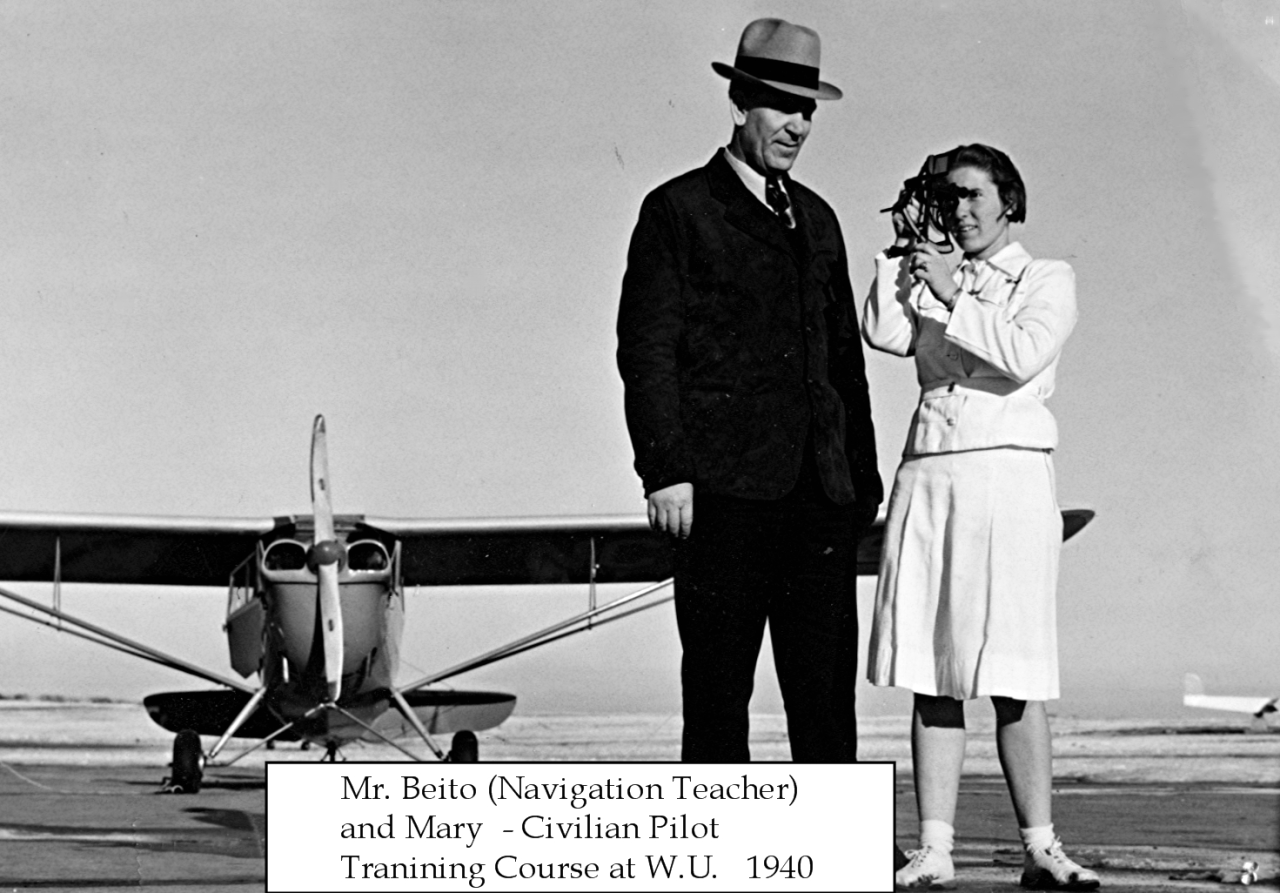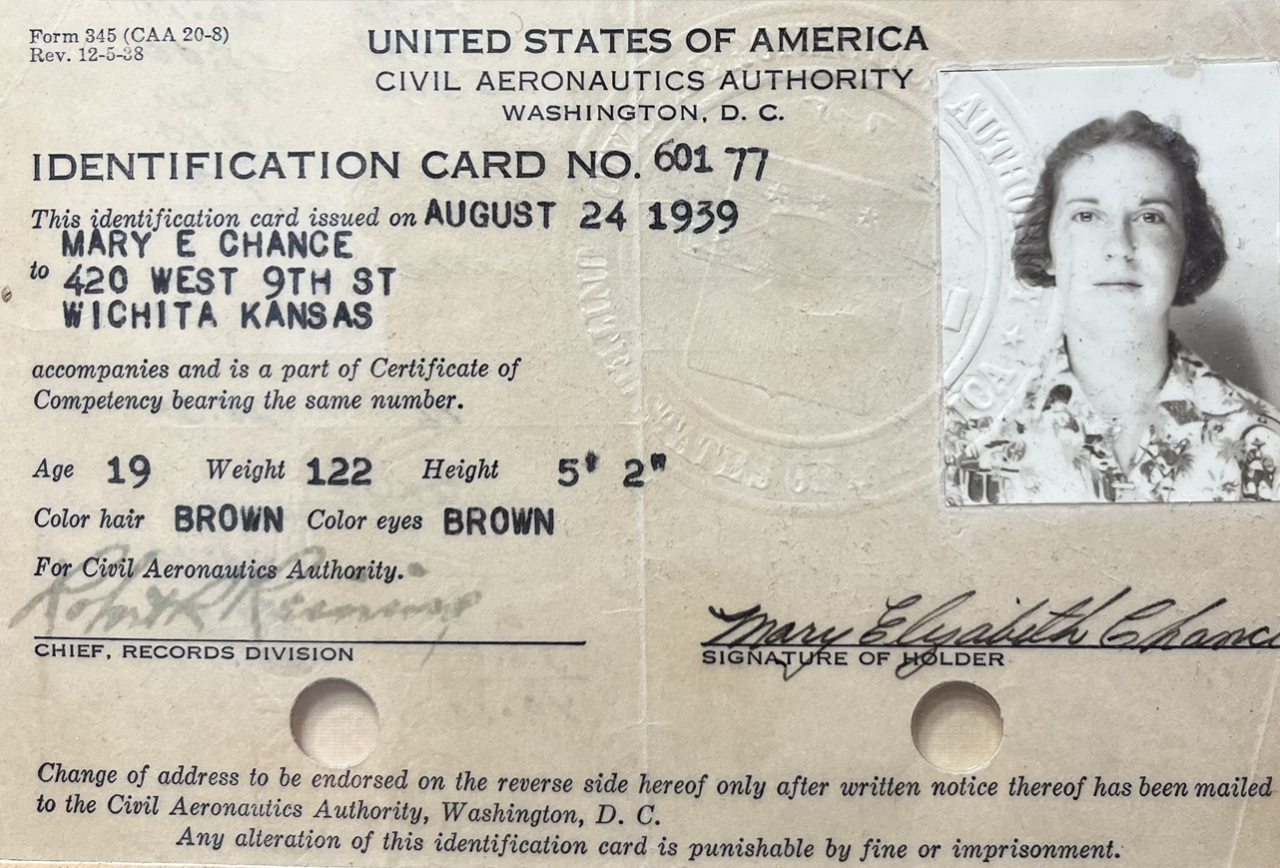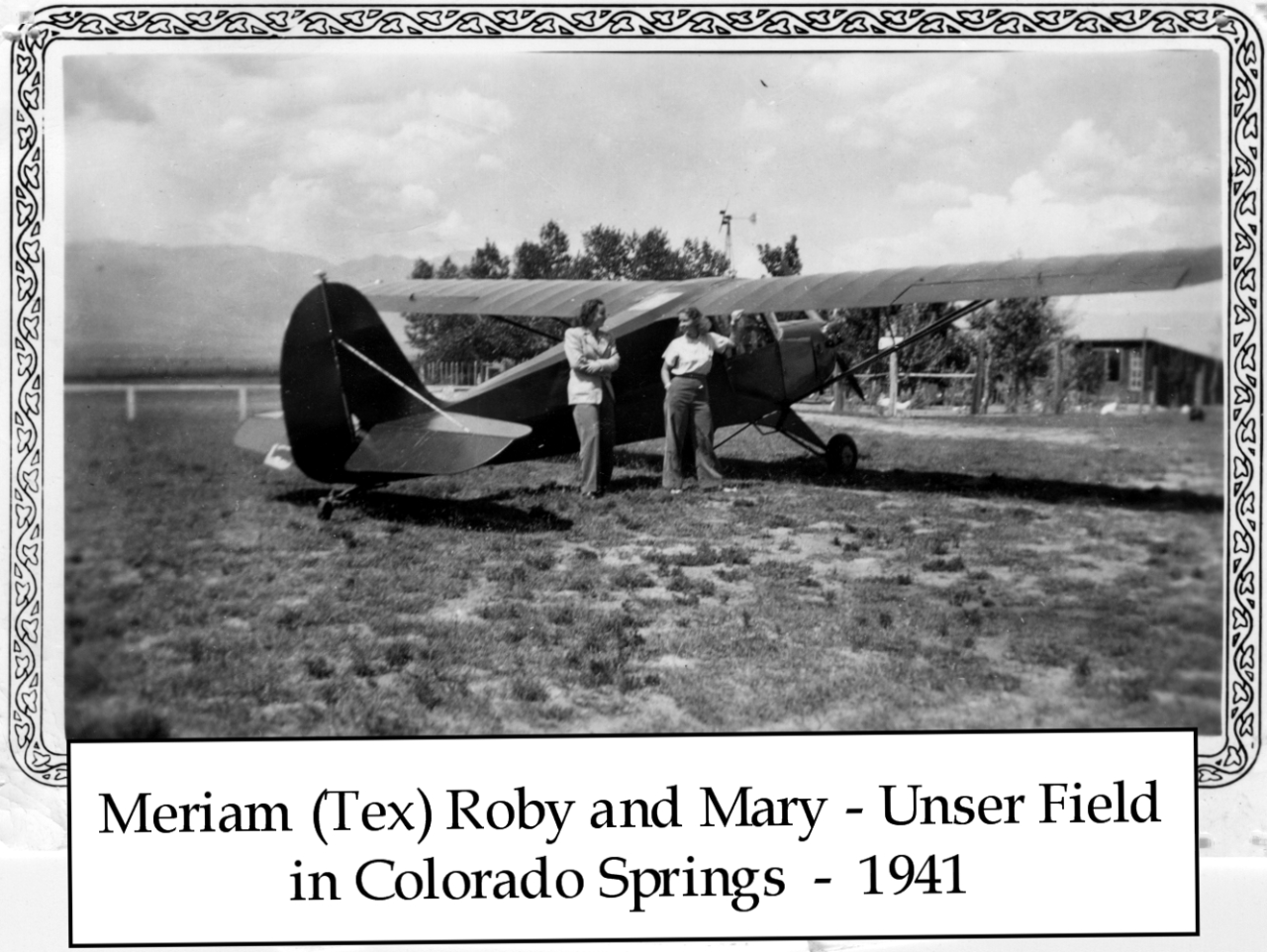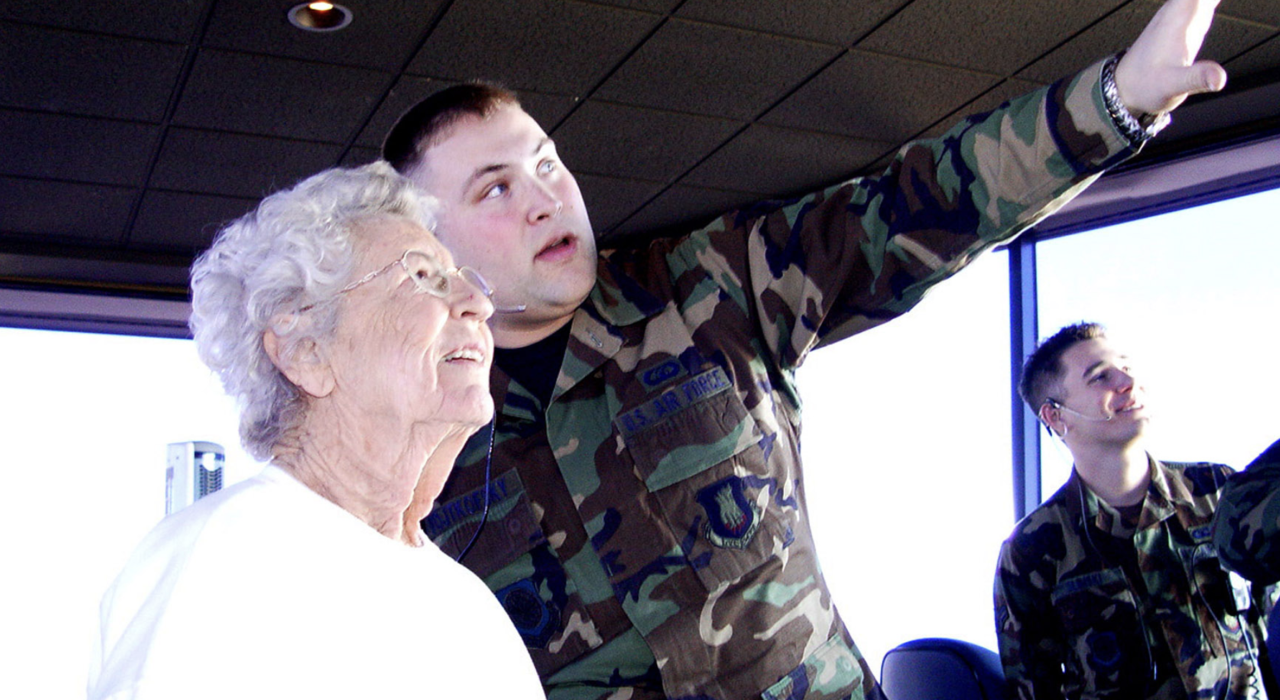DENVER — Mary VanScyoc was born Mary Chance and lived a life taking those chances and seizing opportunities, literally writing the book: ‘A Lifetime of Chances.’
A life filled with planes, trains and motorcycles that would eventually lead Mary to a history-making career decision in the early 1940s in Denver.
Starting out with a childhood filled with discovery, beginning with her early years exploring a 27-room Kansas castle that her family house sat right by the Arkansas River in Wichita.
“The owner had to take his wife back east because she was ill, so they house sat in this castle. They had a lot of adventures,” said Betty Carson, Mary’s daughter. “They had lots of stories about their two years in that castle”Mary’s dad built canoes in the basement of the castle and even rigged up a pulley system to teach Mary and her siblings how to shoot rifles.

One Christmas, a family friend built a special motorcycle, a 1930s original Indian Papoose that held special meaning for Mary.
“My mom usually rode on the back and there was a sidecar for their girly sister Geraldine,” smiled Carson, who would share lots of memories together with that bike.
That motorcycle, which still exists today, shadowed Mary throughout her long life and is featured in many family photos
While Mary was destined for adventure it was pretty clear she was born to fly.
“She’d roller skate as fast as she could, so she could maybe take off and fly,” added Carson.

In the early 1930s, it was a family friend who first gave Mary a chance to soar.
“And he'd been trying to build some airplanes and he kept crashing them but finally, I think it was on his 13th try or something, he got one to stay in the air,” she said. “So my mom's dad took the three kids out to this farm and they got their very first airplane ride with Clyde Cessna,”
Yep, that Clyde Cessna, the founder of the iconic Cessna aircraft company.
Mary would get a second chance to fly, thanks to a family member who bought an airplane, and the aviation bug bit hard.

“He was doing loops and spins and all kinds of tricks and she just loved it, so he taught her how to fly.”
She eventually found the very start of her calling and a film camera was rolling when it happened.
The grainy black and white footage captured the incredible moment late 1930s when Mary took to the air alone for the first time, gaining her wings.
“It was a special day, her first solo on December 27, 1938, the day after her 19th birthday,” shared Carson.

That year, Mary headed off to college at Wichita University majoring in PE and English.
“She did rifle there and she was a good shot. She won the Kansas Women’s rifle championship one year,” said Carson. “They were a good team and won first or second every year she was there.”
While in college, aviation never left Mary’s blood and her life was about to change when she heard of a new opportunity on campus.
“It was called the Civilian Pilot Training Course, so she decided to check it out,” said Carson.
Mary would have to be persistent to get a shot at the class.

"Class was limited to 30 and there were already 30 boys in that class, so she kept stopping by every day to ask if anybody dropped out.”
Those daily checks paid off and fate was on her side.
“Somebody dropped out and they let her in,” said Carson. “She was the only girl in that civilian pilot training class at Wichita University. She ended up getting her pilot’s license at the end of that class.”
After graduating, Mary ventured out to Fort Kansas to teach school for a year.
“They were not too sure about her because she was young and she rode motorcycles and she flew airplanes and played tennis on Sundays in her shorts. So that was a pretty scandalous deal,” Carson laughed.

In the middle of her first year of teaching, World War II broke out and there was a need for air traffic controllers.
“All the guys left and joined the military,” said Carson. “Up until then only men could have those jobs, but since all the men left, they decided maybe the girls could do it after all, so they opened it up to women.”
Back then, the requirements were a college degree and a pilot’s license and Mary had both, so she applied for an ATC position in April of 1942.
“They hired her on the spot.” added Carson.

Even though she was eager to step into the world of air traffic control, Mary finished her first year teaching job before chasing her dream west to Colorado.
“On June 1, 1942, she took a train out to Denver and got off the train, got on the streetcar and headed east toward the airport,” remembered Carson.
“And along the way, she saw a sign in a window that said ‘room for rent’, so she got off and checked about that room,” said Carson.
It was a chance meeting with a family that not only rented a room to her, but forged a lifelong friendship.
“And soon after that, like a few weeks later, they had hired another girl to work in the (Denver) tower, and then a third girl, and they all ended up staying with this family.”

The Denver Airway Traffic Control Center had just opened. There were no computers and not much in the way of radar coverage – air traffic control was in its infancy.
“There was no training, it was all on the job training at that time. And she just loved it,” said Carson.
Years later, Mary wrote about the challenges of those early days in her 1990s book: ‘A Lifetime of Chances.”
“The Air Traffic Control Center in Denver, Colorado had just opened in March with 12 controllers, a chief, a senior controller (who was the trainer) and a secretary,” wrote Mary. “Traffic was controlled only on the airways, which we called the "Highways of the Skies."

It’s probably best to let Mary explain how the early days in Denver guiding planes safely into the skies and back to the runway.
There were only two sectors or A-Boards where we kept track of all planes on flight plans. Today in Longmont (formerly Denver), there are about 50 sectors with their own radar screens, headsets and computers. The centers were renamed Air Route Traffic Control Centers when they started controlling planes on and off the airways. Planes are handed off from one sector to another as they progress across the region.
In the 40s, there were no computers, radar, good radios or navigational systems. There was no ATIS. Each plane was given the wind speed and direction, the altimeter setting and the active runway when receiving taxi clearance. We did not have to tell them of wake turbulence as there were no jets. Pilots were not told how fast or slow to fly on approach - only given their clearance to land or their sequence number.
Mary’s time in Denver only lasted a couple of years before the urge to be closer to family lured her back to Kansas.

Even though her time in Denver was relatively short, it would take around 50 years for her to learn that her moment in the Mile High City was one for the history books.
“She found out later, much later, like in the 1990s, that she was probably the first female civilian air traffic controller in the country,” beamed Carson. “There had been military women air traffic controllers before that, but she was the first civilian because they had just opened it up to girls.”
Right around the same time, there were several women training to become civilian air traffic controllers. Carson said it was Andy Pitas, the founding member and first President of the Air Traffic Controllers Association who did research. He determined it was likely Mary who was the first.

“She had documentation of exactly when she started even though there were several of them across the country, about 15 of them probably that started around that time. But she was the one with documentation,” said Carson. “She thought that was pretty cool, she was proud. She told everybody.”
A curator at Denver’s Wings over the Rockies Air & Space Museum said Federal Aviation Administration records indicate Mary as one of the first in the U.S., if not the first civilian female air traffic controller, but the FAA was somewhat uncertain.
The first family air traffic controller in the world was Yvonne Pope Sintes of England, according to Wings over the Rockies. Mary was certainly a trailblazer among pioneers who opened runways for the profession through the 20th century.

Mary’s career took her back to Wichita then to Cheyenne for a year, before eventually settling down permanently in Kansas, continuing her career as an air traffic controller and starting a family.
“There were a couple of interesting incidents that happened during her time in air traffic control in Wichita,” said Betty.
One of those times was while Mary was up in the control tower when the wind picked up.

“The windows blew out. And they're lucky they didn't get sucked out with the windows that day,” said Carson. “They all hit the floor. There were three or four of them up there in the tower at the time, including a window repairman and he was trying to tighten the windows up so that wouldn't happen.”
Everyone was shaken up a bit but okay.
Carson shared another traumatic story her mom told her the Wichita air traffic control days.
“It was Saturday evening, and she was on duty by herself that evening. And traffic had finally slowed down for the day, they'd had a very busy day,” said Carson. “So her manager left, he took his family to a movie, and there was a fire in the hangar,”

The fire, right next door to the control tower, triggered Mary’s instinct and training.
“So she had her list of things to do in case of an emergency. And so she went down her list,”
By the time the fire trucks came the hangar pretty much burned up with 27 airplanes and a fire truck inside.
“They couldn't get the fire truck out. So,it was very sad for airplane people to watch airplanes burn up like that. They never rebuilt that hangar.”
After two years wrangling planes in Wichita, Mary was transferred to a little airport in Hutchinson.“For about four months, I think it was punishment for something or other,” said Carson. “I’m not quite sure what happened.”

That’s when Mary briefly chased a boyfriend out to Cheyenne, said her daughter. But after a year, she became homesick again and returned to Kansas.
It was the aviation bug that eventually led to Mary meeting the man that would become her husband right around the time the war ended and the guys returned home.
“And so they were taking over the air traffic control jobs and that's where she met my dad,” said Carson. “He just got out of the Army and was taking flying lessons at the university airport. And so, the story goes, my mom had a little Cessna, and my dad had a blue convertible,”

Carson said her dad always wanted an airplane, "and my mom had always wanted a convertible. So they got married,”
The couple started a family and raised three kids. All the while, Mary never lost the aviation bug.
They bought some Kansas farmland, turned some of it into a 9-hole golf course and kept a little hangar out of the Augusta airport.

“If my mom wasn't out there flying, she was out there playing golf,” remembered Carson.
Mary taught an aviation ground school course at a local high school, gave talks to civic groups about her experiences in the tower and the cockpit and even flew well into her senior years, eventually learning how to fly a helicopter.
Her daughter says she always looked back fondly on her time in the early 1940s in Denver.

“She loved it there. She stayed with the two other girls that stayed at that house with her best friends and they still saw each other and kept in contact until they died,” said Carson. “People usually will ask… were the guys mean to you or anything? If they were she didn’t notice it, she just liked it. She liked being up in the tower where the action was.”
The Kansas Aviation Museum used to have a tribute and plaque dedicated to Mary’s lifetime in aviation, noting her legacy as a first. She passed away in 2011.

"As a young girl, long before I ever thought about becoming a pilot, I had a recurring dream. In this dream, I would either be walking or roller skating on the sidewalk. Then I would flap my arms and fly about six feet off the ground. I remember how much fun this seemed to be, and then I would wake up to find it was only a dream,” Mary once wrote.
"But the dream became reality. I was privileged to fly much of my life. I was so fortunate to have had parents who allowed me pursue my dreams. I was lucky to have married a man who shared my dreams and to have had children who supported me in all endeavors."
You can watch Mary's story in the video player below.





